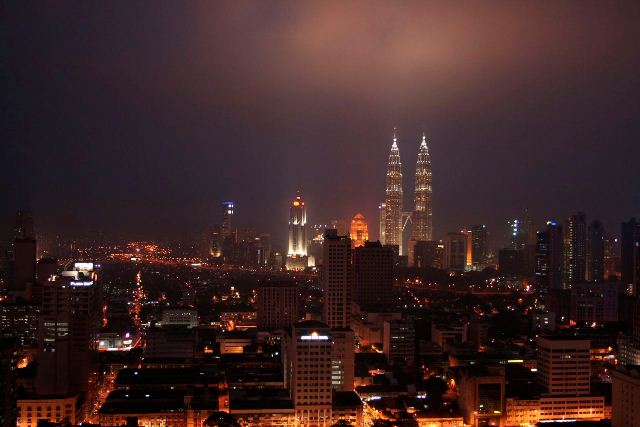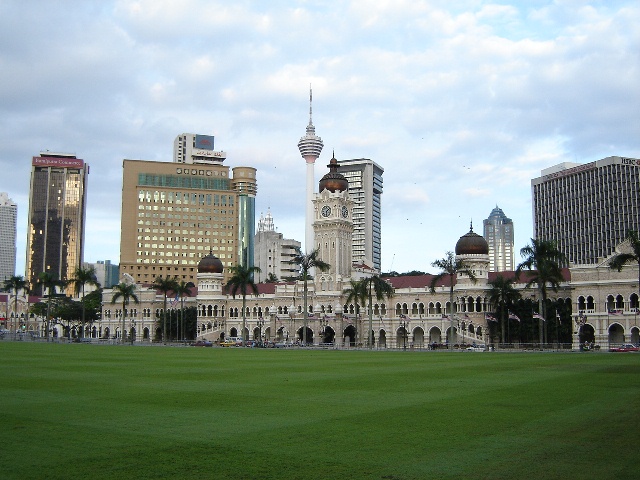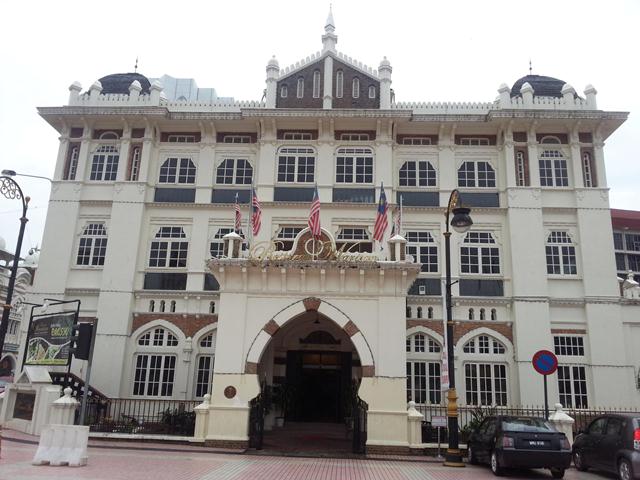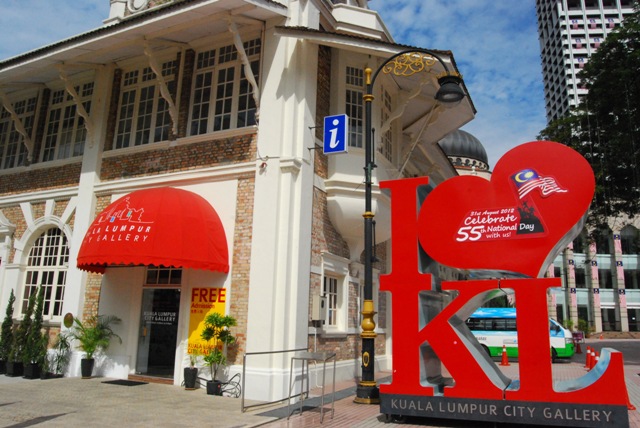
I am Malaysian and have driven past the streets surrounding Dataran Merdeka a countless number of times, but not once had I stopped to admire what the city had to offer. So when I volunteered for the Heritage Guided Tour organised exclusively by Kuala Lumpur City Hall, I wondered if I was going to learn anything new about the city I’ve claimed I know so well. Within the first half hour of the tour, it dawned upon me that I was a tourist in my own city and have been taking Kuala Lumpur for granted – never really appreciating the city’s rich history and heritage.
See Also: Free Heritage Guided Walk at Dataran Merdeka
The free Heritage Guided Tour is designed to give an insight to tourists on how the colonial part of Kuala Lumpur came into being. The two and a half hour tour takes place at 9.00 am every Saturday, Monday and Wednesday and takes participants to 11 historical sites located within the vicinity of Dataran Merdeka. This old section of Kuala Lumpur is now an important historical enclave and a must visit for all historical and cultural enthusiasts.
Led by our wonderful tour guide, Jasmin, we set off on the tour that not only made me look at KL differently, but also helped gain a sense of pride towards my country and appreciation for our forefathers who fought so hard to give Malaysians the independence we take so lightly today. Kuala Lumpur is a historically rich city despite its youthful age – only 155 years old compared to other cities of the world. And yet, it has gone through several rites of passage – a tin boom in the mid-19th century, a devastating fire, a flood, the Japanese Occupation, and 151 years of British rule.
While Dataran Merdeka is an iconic attraction in the city, not many people know the stories behind the 10 interesting historical landmark buildings that are over 100 years old, within the vicinity. Most of the buildings were built in the late 1800s and early 1900s, with a blend of old Colonial, Moorish, Tudor, Neo-Gothic and Islamic architectural styles. The tour is the perfect way to admire the classic beauty of these important buildings in their entire original splendour.
1) The Government Printing Office
Architects A.C. Norman and J. Russell built this magnificent Moghul-India inspired building in 1898 to meet the printing needs of the then-British Malaya Administration. Government reports, official government books and even train tickets were printed here. Today, it is known as the KL City Gallery with a Tourist Information Centre.
2) National Textile Museum
Completing this row of colonial relics is the National Textile Museum. This building is distinguishable by its design of alternating red bricks and white plaster bands and an Islamic-style façade with raised onion-shaped domes derived from Moghul architecture. Originally built in 1896 (architect A.B. Hubback) to house the headquarters of the Federated Malay States Railways, it was then used by a number of various government departments before being refurbished as a textile museum in 2007.
3) Victorian Fountain
The fountain, estimated to be more than 100 years old, was brought in from England and assembled in Kuala Lumpur. It is interesting to note that the striking, but seemingly out-of-place Victorian fountain, which sits on the south-east corner of the Square, was shipped over in its entirety from England, rebuilt and disassembled twice, before being allowed to settle in its current location. Today, it stands as a striking example of Art Nouveau tile work.
4) The Sultan Abdul Samad Building

The first example of Moghul attraction in Malaysia, featuring a 41-metre clock tower, arched colonnades and copper domes, is the Sultan Abdul Samad Building. Built between 1894 and 1897 it was designed by A.C. Norman and R.A.J. Bidwell in a Mogul architectural style. The building was named after the then Sultan of Selangor and over its lifetime, it has served as government offices and as the High Court and Supreme Court. Today, it is occupied by the Ministry of Information, Communications and Culture.
5) Old City Hall
The Old City Hall, built in 1896, stands out from the surrounding buildings with its black domes and interesting roofline of Islamic arches and dome-shaped pavilions. Now it serves as one of the oldest theatres in the country. The interior was destroyed by fire in 1992 but has since been restored and updated. It was the venue for the Kuala Lumpur International Short Film Festival in 2012, and those fortunate enough to catch a performance here will appreciate the old-world glamour of the experience.
6) The Chartered Bank

This three-story symmetrical building with a protruding porch and arches on the ground level expresses Moghul architecture eloquently. The building has been turned into Restoran Warisan. The most famous story about this bank revolves around the floods of 1926 during which the basement of the building was submerged. When the floods subsided, the bank had to dry out its vault contents, and banknotes were spread out on the cricket pitch in front of the bank to dry in the sun.
7) ST Mary’s Cathedral
This was the first brick church in the Federated Malay States and it is also one of the oldest Anglican churches in the region. It was rebuilt in its Gothic English style after a fire affected parts of it in 1922. The church’s pipe organ is a masterpiece from 1895 built by one of the greatest organ makers in the world, Henry Willis – and it still works!
8) Former High Court Building
After years of deliberating whether the Kuala Lumpur Supreme Court required a new building and where it ought to be, the two-storey building, now called the “Old High Court”, was finally constructed in 1912 and completed in 1915. This two-storey building has a Moorish exterior with four towers and is now occupied by the Ministry of Information, Communications, and Culture.
9) Kuala Lumpur City Library

This new building serves as a public library with an auditorium, conference area and multi-purpose hall. Visitors can browse through a collection of 50,000 titles of both adult and children’s books and it also has a good collection of audio and visual material as well as e-books.
10) Dataran Merdeka
Dataran Merdeka (Independence Square), is where the British Union Jack was lowered and the flag of an independent Federation of Malaya was raised for the first time on 31st August 1957 – ending British rule over Malaya after 151 years. It was also the site of many a cricket match organised by the Royal Selangor Club.
11) The Royal Selangor Club
The Royal Selangor Club was established as an exclusive club for the growing expatriate community back in colonial times, but has since been open to Malaysian membership as well. Its Mock Tudor styling fronting an expanse of well-trimmed green lawn harks back to its English beginnings and is a refreshing change from the modern skyscrapers of Kuala Lumpur. Since we registered under the heritage tour, we had the exclusive privilege of entering the premises for refreshments at the “Long Bar” – usually reserved for male members only.
For more information on the Heritage Guided Tour, visit www.visitkl.gov.my or email [email protected]
Source: The Expat February 2014
Read more articles on what to do in KL:
- Get to Know Malaysia’s Famous Batu Caves
- 12 Tourist Places to Check Out in Kuala Lumpur
- Top Sightseeing Destinations in Kuala Lumpur
What are your thoughts on this article? Let us know by commenting below.No registration needed.
"ExpatGo welcomes and encourages comments, input, and divergent opinions. However, we kindly request that you use suitable language in your comments, and refrain from any sort of personal attack, hate speech, or disparaging rhetoric. Comments not in line with this are subject to removal from the site. "


















